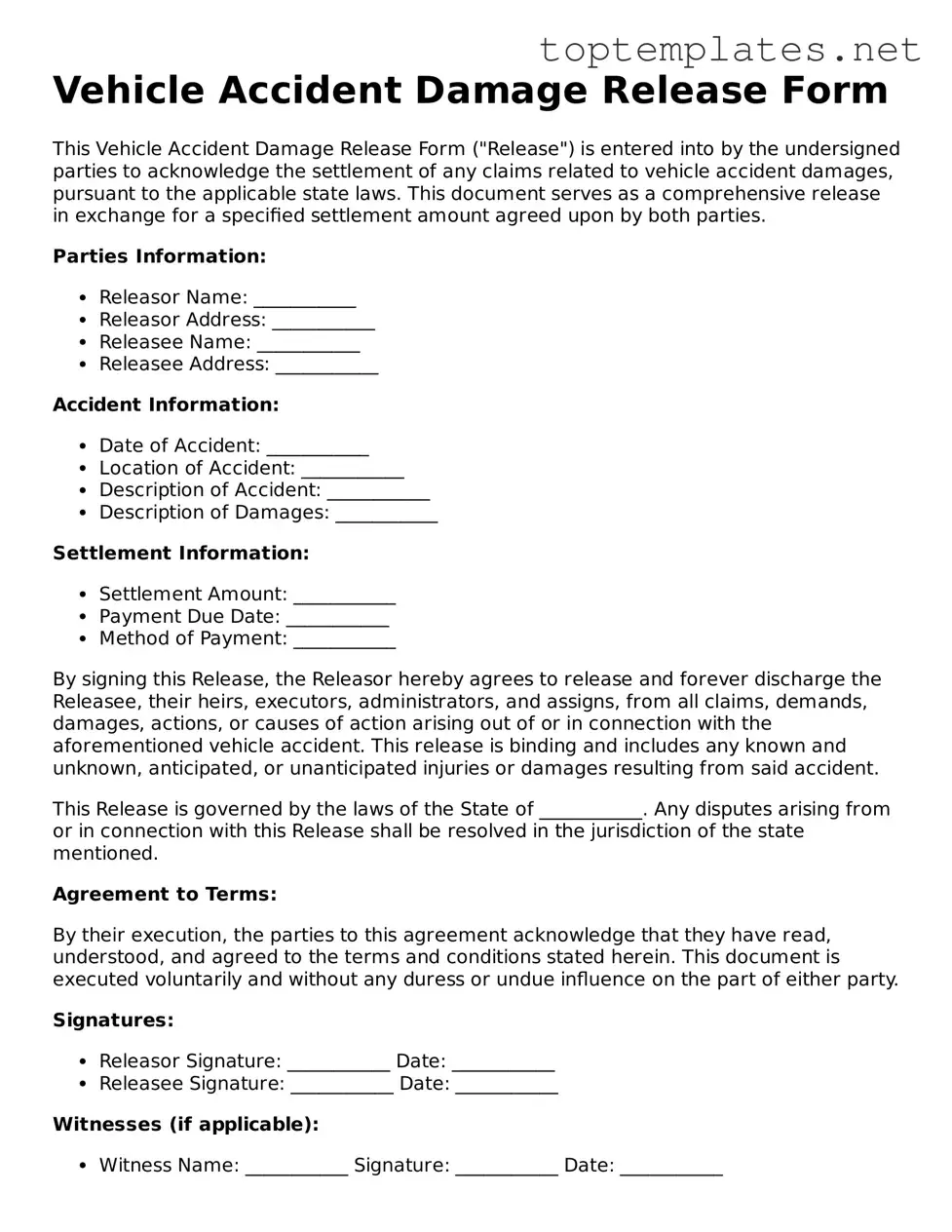Vehicle Accident Damage Release Form
This Vehicle Accident Damage Release Form ("Release") is entered into by the undersigned parties to acknowledge the settlement of any claims related to vehicle accident damages, pursuant to the applicable state laws. This document serves as a comprehensive release in exchange for a specified settlement amount agreed upon by both parties.
Parties Information:
- Releasor Name: ___________
- Releasor Address: ___________
- Releasee Name: ___________
- Releasee Address: ___________
Accident Information:
- Date of Accident: ___________
- Location of Accident: ___________
- Description of Accident: ___________
- Description of Damages: ___________
Settlement Information:
- Settlement Amount: ___________
- Payment Due Date: ___________
- Method of Payment: ___________
By signing this Release, the Releasor hereby agrees to release and forever discharge the Releasee, their heirs, executors, administrators, and assigns, from all claims, demands, damages, actions, or causes of action arising out of or in connection with the aforementioned vehicle accident. This release is binding and includes any known and unknown, anticipated, or unanticipated injuries or damages resulting from said accident.
This Release is governed by the laws of the State of ___________. Any disputes arising from or in connection with this Release shall be resolved in the jurisdiction of the state mentioned.
Agreement to Terms:
By their execution, the parties to this agreement acknowledge that they have read, understood, and agreed to the terms and conditions stated herein. This document is executed voluntarily and without any duress or undue influence on the part of either party.
Signatures:
- Releasor Signature: ___________ Date: ___________
- Releasee Signature: ___________ Date: ___________
Witnesses (if applicable):
- Witness Name: ___________ Signature: ___________ Date: ___________
- Witness Name: ___________ Signature: ___________ Date: ___________
